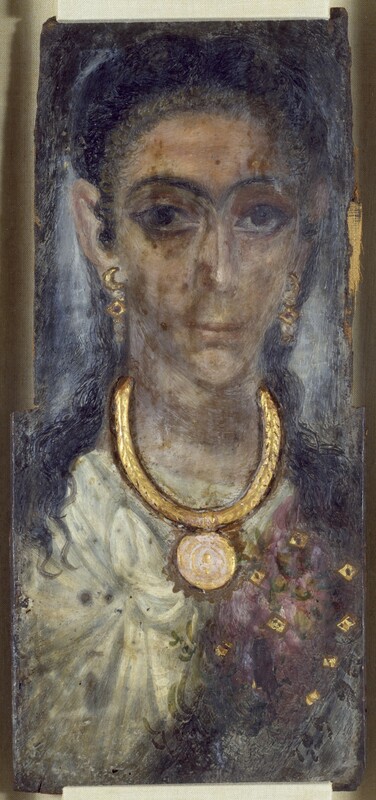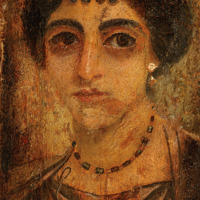Mummy portraits
Date:
ca. 100–200 CE
Location or Findspot (Modern-Day Country):
Egypt
Medium:
Encaustic painting,
Wood
Dimensions:
Each approximately 41 x 23 cm
Description:
Fayum mummy portraits are a type of panel painting found across Egypt and dating to the Imperial Roman era (20–300 CE). They originally covered the faces of individuals who had been mummified for burial. The mummy portraits reproduced here give us a glimpse into the clothing and jewelry of upperclass Romano-Egyptian women. Rich adornment is so important in one of the portraits that plaster was used to give a three-dimensional effect to the woman's jewelry, including a large pendant with a gold coin. This portrait was discovered at Antinoopolis, and the other two at Roman cemeteries in the the Fayum (al-Fayyum), Egypt (for this reason they are often called "Fayyum mummy portraits"). They were painted on wood panels using the encaustic technique, which involves mixing pigments with heated beeswax.
Relevant Textbook Chapter(s):
1
Repository and Online Resources:
• Read an article about the pigments used in such portraits here.
Image Credits:
Royal Ontario Museum




